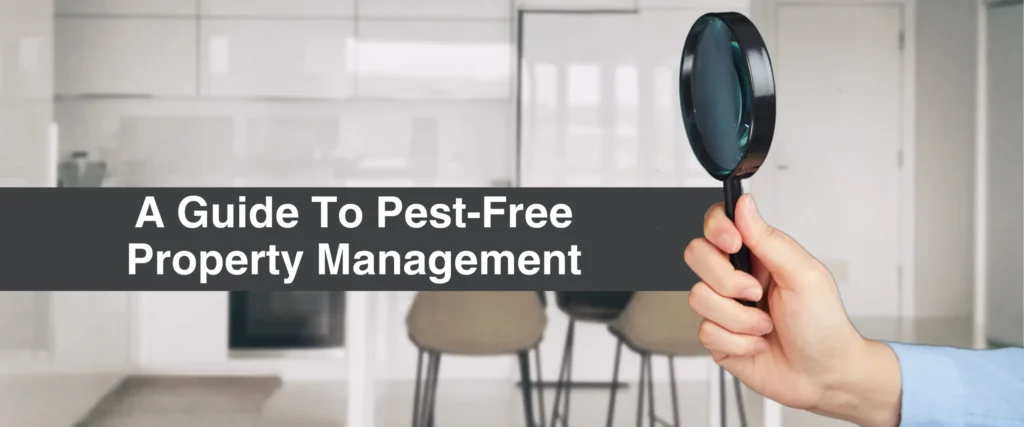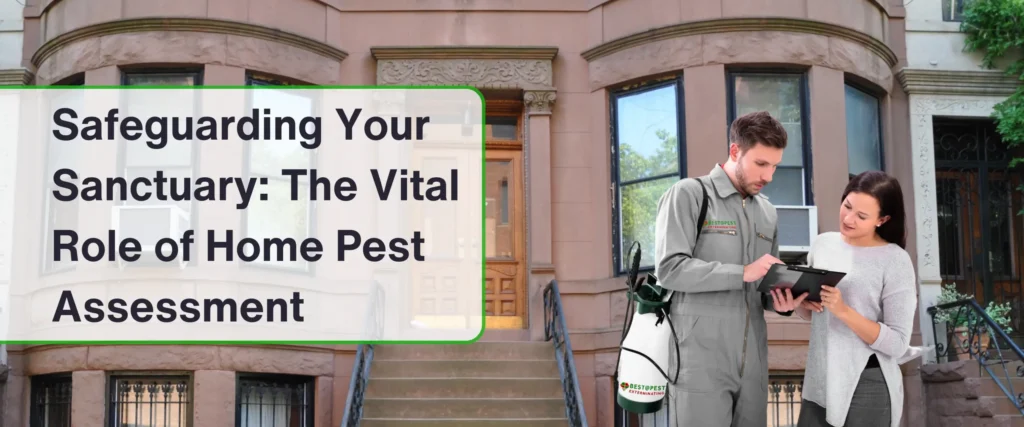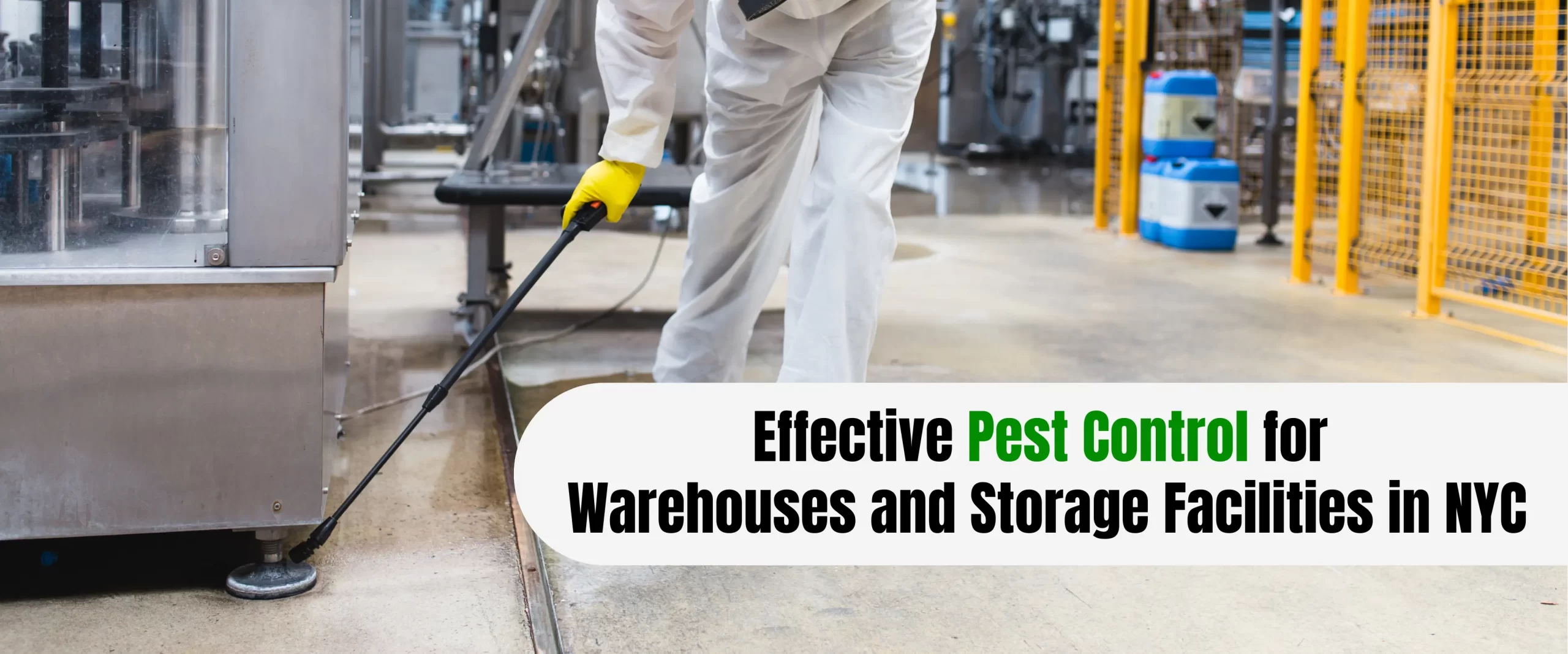
Ultimate Guide to Effective Pest Control for Warehouses and Storage Facilities in NYC
Keeping your NYC warehouse or storage facility pest-free is crucial for several reasons. This guide will equip you with the knowledge and strategies to achieve a pest-free environment.
Importance of Pest Control in NYC Warehouses and Storage Facilities
Pests in NYC warehouses can damage inventory, contaminate products, and pose health risks to employees. Rodents can chew through electrical wires, causing fires. Insects can leave behind droppings and shed skin, triggering allergies and asthma. A pest infestation can also lead to negative publicity and government penalties.
Common Pests in NYC Warehouses and Storage Facilities
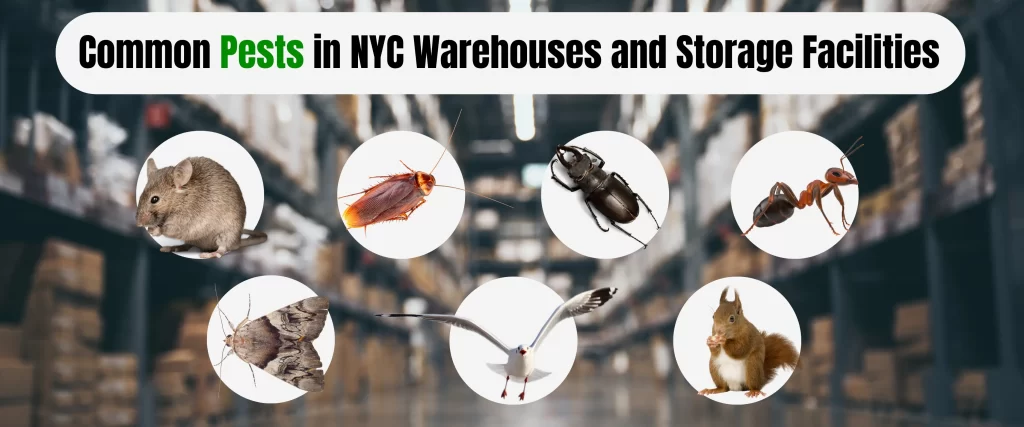
Protecting your NYC warehouse or storage facility from pests is essential. Here’s a detailed breakdown of the most common invaders you might encounter and the problems they bring:
Rodents: Mice and Rats
- NYC’s Rodent All-Stars: Norway rats and house mice are the most common warehouse rodent residents in NYC.
- Signs of Rodent Activity: Keep an eye out for droppings, which look like dark pellets or capsules. Gnaw marks on food packaging, electrical wires, and even building materials are telltale signs. Rodents also leave grease trails along walls as they travel established routes. At night, you might hear squeaking or scratching noises coming from their hidden dens.
- The Damage They Do: Rodents are destructive chewers, causing damage to inventory, electrical wiring, and the building itself. They can also spread diseases like hantavirus and leptospirosis through their droppings and urine.
Insects: A Creepy Crawly Crew
NYC warehouses provide a buffet for various insects seeking shelter and food sources. Here are some of the most common:
- Cockroaches: These resilient pests are notorious for spreading bacteria and triggering allergies and asthma. Look for live or dead roaches, shed skin, and droppings.
- Beetles: Flour beetles, Indian meal moths, rice weevils, and sawtoothed grain beetles are particularly problematic in warehouses storing food products. Signs of infestation include the presence of adult insects, larvae, and shed exoskeletons.
- Ants: Always on the lookout for crumbs and spills, ants can contaminate food and become a nuisance.
- Moths: Fabric-loving moths like webbing clothes moths can wreak havoc on stored textiles and clothing. Look for webbing, live moths, or holes in fabrics.
Other Urban Pests: Sharing Your Space Uninvited
While less common than rodents and insects, birds and other wildlife can also find their way into warehouses, causing problems:
- Birds: Finding a way in through open doors or damaged screens, birds can leave behind droppings that pose health risks. They might also build nests in rafters or high shelves, creating a nuisance and potentially damaging the building structure.
- Wildlife: Depending on your location in NYC, you might encounter raccoons, squirrels, or even bats. These animals can cause property damage and pose health risks through bites or droppings.
Warehouse Pest Management Strategies for NYC
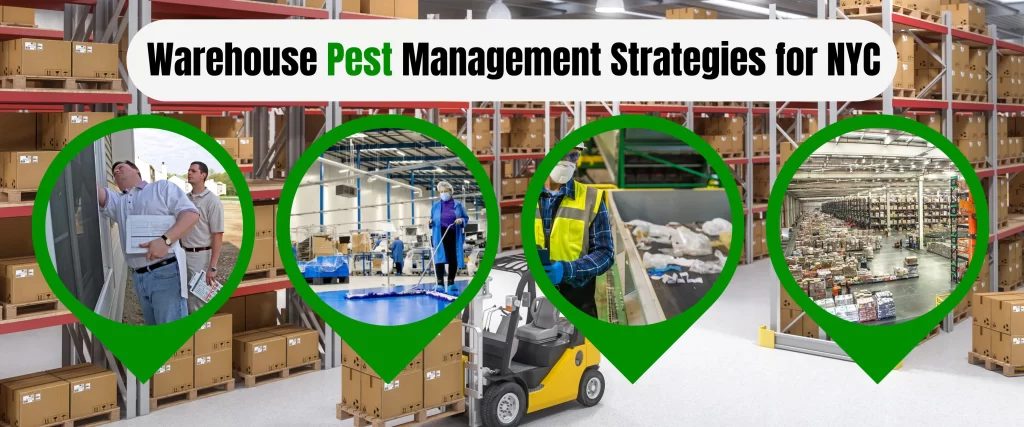
Keeping a pest-free warehouse in NYC requires a multi-pronged approach. Here’s a detailed breakdown of essential strategies to outsmart those unwanted visitors:
Regular Inspections and Pest Monitoring (Warehouse Pest Management)
- Proactive is the key! Conduct regular inspections of your warehouse, looking for signs of pest activity like droppings, gnaw marks, shed skin, or live insects.
- Utilize strategically placed traps and monitors. These act as early warning systems, allowing you to detect a potential infestation before it explodes.
Sanitation and Hygiene: Keeping Your NYC Warehouse Sparkling Clean
- Cleanliness is key: Create a pest-unfriendly environment by maintaining a clean and clutter-free warehouse. Regularly sweep floors, remove debris, and eliminate potential food sources for pests.
- Storage solutions: Store food items in sealed containers, preferably raised off the ground to deter rodents.
- Waste not, want not: Implement a regular schedule for garbage removal to eliminate food scraps that attract pests. Pay close attention to proper bin maintenance – overflowing or dirty bins become prime real estate for pests.
- NYC twist: Since NYC has a higher density of people and potential food sources for pests compared to other locations, emphasize the importance of stricter sanitation practices in your warehouse.
Effective Storage and Waste Management Techniques: Warehousing Like a Pro
- Smart storage: Store food off the ground on pallets or shelves to make cleaning easier and deter rodents.
- Recycling and composting: While these practices are great for the environment, they can also attract pests if not managed properly. Ensure proper bin maintenance and keep them away from walls to prevent them from becoming harborage areas for insects and rodents.
Structural Modifications and Exclusion Methods: Sealing Your Fortress
- Seal the cracks: Pests are excellent at finding tiny entry points. Regularly inspect your warehouse for cracks, gaps, and holes around pipes, windows, and doors. Seal these openings with caulk, steel wool, or other appropriate materials to prevent unwanted guests.
- Doorways are crucial: Install weather stripping around exterior doors to create a tight seal and deter pests from entering.
- Window warriors: Repair damaged screens and windows to prevent flying insects and birds from entering.
Effective Warehouse Rodent Control in NYC: Battling the Borough’s Burrowers
Rodents are a significant concern in NYC warehouses. Here’s how to keep them at bay:
- Spot the signs: Be vigilant for droppings, gnaw marks on packaging and wires, and grease trails along walls. These are all telltale signs of rodent activity.
- Traps and baits: Use tamper-proof bait stations containing rodenticides approved for use in NYC. Strategically place snap traps in areas with high rodent activity. Remember: Always follow safety guidelines and local regulations regarding rodenticide use.
- Safe and compliant: Only use EPA-approved rodenticides and strictly adhere to all label instructions. Secure bait stations to prevent access by children and pets.
Securing Entry Points in Old and New Buildings: A Multi-Building Approach
Whether your warehouse is a historic brick building or a modern facility, sealing entry points is crucial:
- Focus on vulnerable areas: Pay particular attention to gaps around pipes, utility lines, and around doors and windows, regardless of the building’s age.
- Choosing the right materials: Use caulk, steel wool, or other appropriate materials to effectively seal these entry points and keep pests out.
Advanced Pest Control Techniques Tailored for NYC Warehouses
The battle against pests in NYC warehouses requires a sophisticated arsenal. Here’s a look at some advanced techniques specifically suited for urban environments:
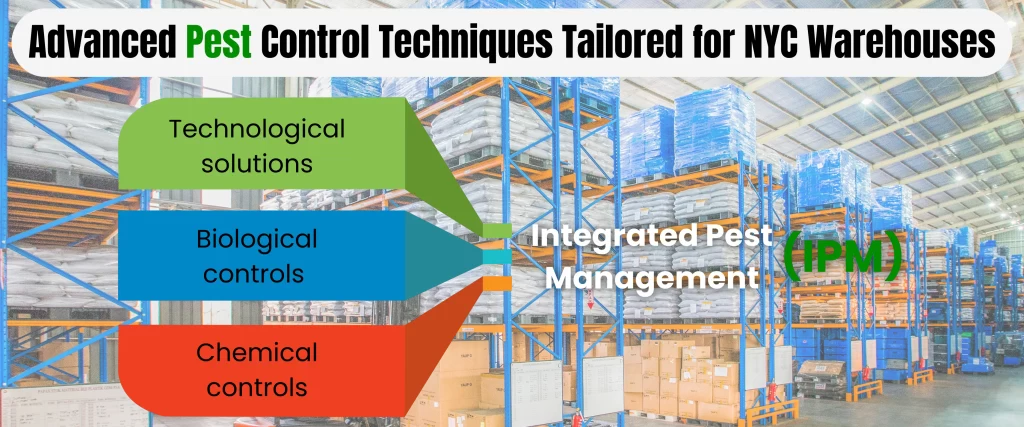
Integrated Pest Management (IPM) for Urban Warehouses:
- Holistic Approach: IPM goes beyond simply killing pests. It emphasizes a multi-layered strategy that combines monitoring, sanitation, exclusion methods, and targeted use of pesticides for long-term pest control. This approach minimizes reliance on chemicals and disruptions to your warehouse operations.
- NYC Focus: In a dense urban environment like NYC, IPM is even more crucial. By focusing on preventative measures alongside targeted control methods, you can address the constant pressure from external pest populations.
Technological Solutions: Smart Warehouses, Smarter Pest Control
The world of pest control is embracing technology:
- Smart Traps: These high-tech traps go beyond simply catching pests. They can be equipped with sensors that detect movement, identify the type of pest caught, and even transmit data to a central hub. This allows for real-time monitoring and targeted response.
- Digital Monitoring Systems: Remote monitoring systems use strategically placed sensors and cameras to track pest activity throughout your warehouse. This allows for early detection of infestations and quicker response times. Imagine being able to monitor potential problems from your phone or computer!
Biological Controls: Introducing Nature’s Pest Busters
Biological controls utilize natural enemies of pests to manage populations:
- Parasitoid Wasps: These tiny wasps lay eggs inside the bodies of pest insects, effectively controlling populations of cockroaches, beetles, and moths.
- Predatory mites: These natural predators can be introduced to target specific pests like bed bugs or spider mites.
- Beneficial nematodes: Microscopic worms that parasitize and kill specific insect pests in the soil, making them a potential option for warehouses with stored food products.
Chemical Controls: The Responsible Use of Pesticides in NYC
Chemical controls, when used judiciously and as part of an IPM program, can still be a valuable tool:
- NYC Regulations: Remember, NYC has stricter regulations regarding pesticide use compared to other areas. Ensure your chosen pest control company is licensed and uses EPA-approved products specifically for use within the city.
- Targeted Application: Focus on targeted applications of pesticides rather than broad-spectrum sprays. This minimizes environmental impact and reduces the risk of resistance development in pest populations.
The Latest Advancements:
The field of pest control is constantly evolving. Here are some exciting developments to watch:
- Gene editing for pest control: While still in its early stages, research is ongoing into using gene editing techniques to disrupt the reproduction of specific pest species.
- Attractants and repellents based on pest behavior: Scientists are developing new attractants and repellents based on a deeper understanding of pest biology and behavior. This could lead to more effective and targeted control methods.
Preventive Measures for Long-Term Pest Control in NYC Warehouses
Ongoing Maintenance and Regular Monitoring
- Eternal vigilance: Even with professional help, maintaining a pest-free environment requires ongoing vigilance. Regularly inspect your warehouse for signs of pest activity and address any potential issues promptly.
- Partnering with your pest control provider: Schedule regular inspections and monitoring visits with your pest control company to proactively identify potential problems before they escalate.
Training and Awareness Programs for NYC Warehouse Staff
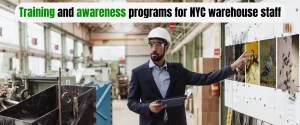
- Educate your team: An informed staff is a powerful weapon in your pest control arsenal. Train your warehouse staff to recognize signs of pest activity, understand proper sanitation practices, and report any concerns promptly.
- Warehouse-specific considerations: Train staff on proper storage practices for food items, waste management procedures, and how to identify potential entry points for pests.
Conclusion:
To achieve a pest-free environment, it is vital to implement the strategies discussed and remain vigilant. Business owners and facility managers should not hesitate to seek professional help when necessary. Pest control experts bring specialized knowledge and experience, ensuring that pest management plans are comprehensive and effective.
By proactively addressing pest issues, investing in preventive measures, and leveraging professional services, warehouses and storage facilities in NYC can maintain a pest-free environment, protecting their assets and ensuring smooth operations.

